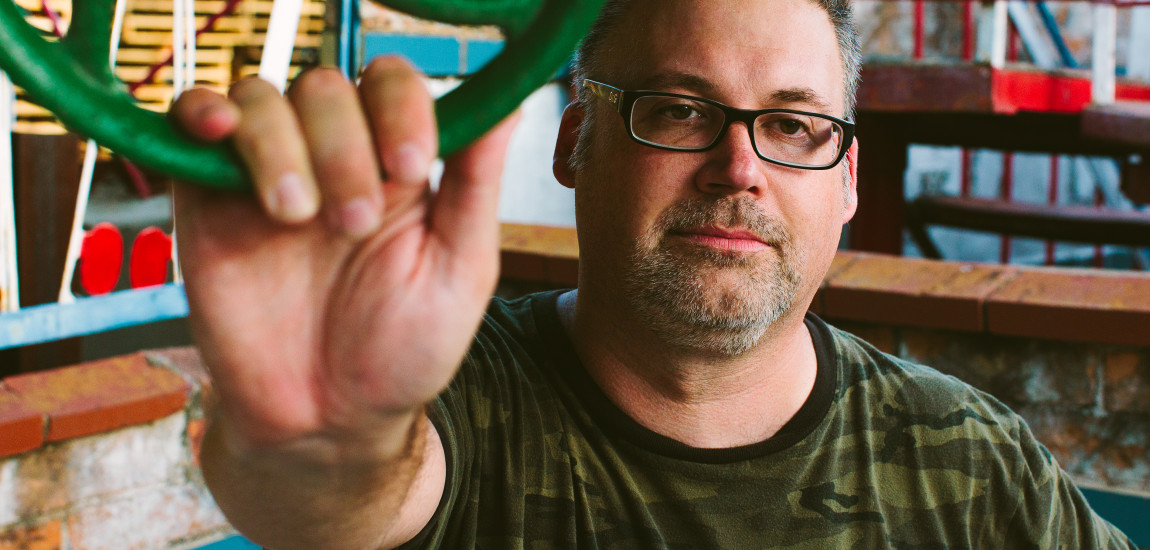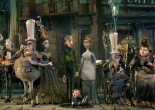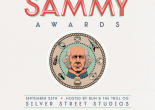
A Brave New Wave: A Chat with Paul Connolly

Photo by Lynn Lane
Setting up a local music showcase promoting you and your closest friends is not an uncommon occurrence. In fact, it’s a brilliant marketing ploy. Suddenly you’re no longer some guy or gal vying for fandom: Now you’re a curator! An impresario! Able to paint yourself as a selfless Jay Gatsby who just wants to share with the world, asking nothing in return. Oh yeah, except it would be nice if you voted a few times for us on XYZ online contest. Maybe buy a few dozen T-shirts or so. Or you can even pre-order our locally-pressed, triple LP featuring a 100% gluten-free, rice paper gatefold. These events are a dime a dozen.
However, when the musician in question sets up a series of programs where the spotlight is aimed exclusively on other artists, and ultimately the artform itself, we should take note. And that’s exactly what Houston-based composer and electronic artist Paul Connolly is doing with his Brave New Wave Sound Series, which calls together aficionados and novices alike to celebrate contemporary electronic musicians and explore the genre’s rich history.
What do you do to make experimental electronic music more accessible to an audience that might not normally turn up to an event like this?
The approach that I’ve taken is more modern musics tend to be less accessible to the listener. Not because of the music necessarily, but there’s just inherently more of an abstraction. You’re not tied to melody or harmony, or in many cases even rhythm. So on the surface, it’s more challenging. But having said that, if you have someone who’s coming to a concert or listening to a piece, you have their attention, I think, by giving them an awareness as to the concept of the piece-how it’s structured. Not in a real academic way, but enough to help guide them along. To me, that immediately diffuses that inherent kind of intimidation that there can be.
I think the 20th century music moniker, if you will, a lot of it gets wrapped into people’s perception of a period of time that is very academic, not definitively, but you have the whole 12-tone serialism, you have this very rigid, almost mathematical kind of construct. A lot of times you’re listening, and it’s like they’re proving a math theorem; and yes that’s great, but doesn’t necessarily translate into a connection for the listener. It requires a very different lens of listening, and if someone doesn’t have a music background or doesn’t gravitate toward that style of music, it comes off as being just “noise”.
What’s interesting is that within electronic music, there is a whole sub-genre of “noise music”, where there is a diverse palette of “timbre” or sound itself-be that harsh noise, drone, ambient or what have you.
It is certainly a different approach in how music is presented, but if done correctly is as satisfying (to me at least) as some of the more traditional music forms.
Whether consonant or dissonant, it comes back to that connection thing again.
Just while we’re on the topic of approaching electronic music that’s not just dubstep for example-more adventurous forms of electronic music-what’s an artist that someone who is not familiar might find themselves pulled into the genre by?
Well, one of the things that I love about electronic music is that it’s so diverse. You’ve got genres and subgenres. You’ve got ambient and techno and grime and drum and bass and they all kind of originate from an original starting point, but they’re often night and day from each other.
You have everything from the very dancy side of thing, but also other genres or subgenres, like electroacoustic, which has a more classical music kind of construct. You may have the academic and computer music side as a foundation, which has its roots in music concrete, from composers like Pierre Schaeffer and the electronic school with people like Stockhausen, and it has kind of progressed further from there. Sampling culture, for example, really has its roots in music concrete. The tools available were more primitive, but the results are pretty much the same.
Tell us about the purpose of the Brave New Wave Sound Series and what you hope to accomplish with it?
The intent of the Brave New Wave series-selfishly it’s the opportunity to show a broad audience the tremendous diversity of the electronics genres, certainly to elevate or bring visibility to the tremendous talent that we have in this city and Texas. Plus, it’ just a great opportunity just for me to listen.
Even though I played on a couple of shows last year, my intent this year is not to play at all. Other series have taken a different approach where the organizers play fairly frequently, and I don’t have a problem with that at all, but I tried to really say, it’s important that everyone hear everyone else. It doesn’t need to be, ‘Oh here’s Paul Connolly on the program because he’s curating it’. I’ll play on other people’s shows, and I really appreciate that. There’s lots of opportunities for me to play. I don’t know, I’m Canadian, maybe it feels pretentious for me to be playing on all my own shows [laughter]. Again, there’s such great talent in this city. Any opportunity to feature an artist that I think others will enjoy as well-I’m all for.
For more information on “Brave New Waves Sound Series” contact Paul at paul@brave-new-waves.com. The next event in the series will take place July 20th and will feature local veteran JD Emmanuel.





You must be logged in to post a comment Login